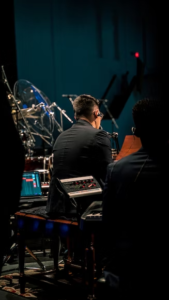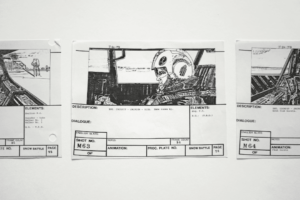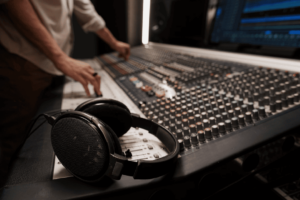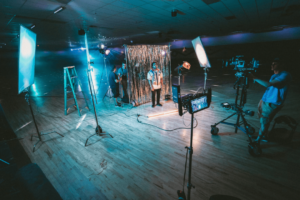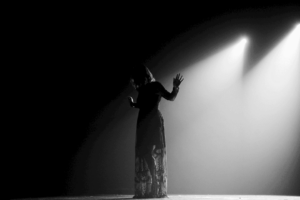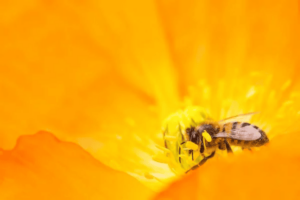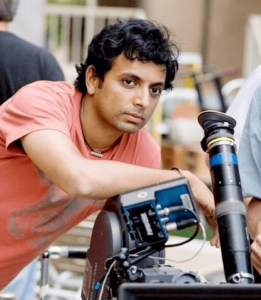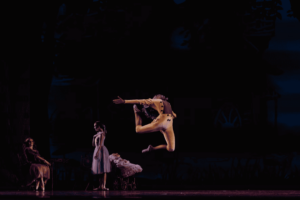Tripod is a versatile and indispensable tool for photographers and videographers alike. This three-legged support system offers stability and precision, allowing for steady shots, long exposures, and creative framing. Whether you’re capturing breathtaking landscapes, shooting in low light conditions, or recording smooth videos, a tripod is a reliable companion that enhances the quality of your work. With various sizes, materials, and features, tripods cater to various needs, from lightweight travel options to heavy-duty setups. In this guide, we will discover the essential aspects of tripods, helping you choose the right one to elevate your photography and videography endeavors.

What is a Tripod?
In photography, a tripod is a three-legged device designed to securely and steadily hold a camera. Most tripods have a central pole and height-adjustable legs and are used with a mount to which a head is fixed. The primary purpose of a tripod is to allow photographers to capture photos using slow shutter speeds, i.e., long exposure shots, for example, in astrophotography, where enough ambient light is not present to handhold the camera without adding a shake into an image. Tripods are also widely used when a photographer wants to capture the same photo or scene multiple times, for example, creating HDR images by capturing the same scene multiple times at different exposures.
What are the Parts of a Tripod?
Almost all tripods are combined with basic components. In the image below, we labeled the tripod’s different parts. Nearly every part comes in different shapes, sizes, and materials. However, all the components perform the same job, and the overall goal of the tripod is to offer stability for your camera.

Image Source: Amazon.com
Let’s look at every component, working from top to bottom, and discuss the possible variations between types of tripods.
The Head
There are several types of tripod heads. The primary goals of the tripod head are to provide a way to fix your camera to the tripod, allowing the camera to reposition to frame the image as you wish and then hold the camera steady while the photo is taken. The tripod head options are listed below.
3-Way / Pan and Tilt Head
The most traditional tripod head type is the three-way or pan-and-tilt head. It can be identified by the three control arms extending from the head’s body. Using this, you can adjust the position of the head one axis at a time—horizontal, vertical, and panning. Adjusting the head about one of the axes can be accomplished by loosening one of the arms with the help of a twist, repositioning the head, and then re-tightening the arm.

SLIK SH-807E 3-Way Pan/Tilt Head
The benefits of the three-way head are precise movements about one axis and ease of use. The drawback is size—they are generally bulky due to the extending arms. This makes them slightly unattractive for travel. Three-way heads are generally used for landscape photography, studio work, still-life, and macro photography. However, they can be used for capturing all types of photographs.
The Ball Head
The ball head is a recent invention compared to the other heads. The design comprises a ball enclosed in a housing with a tightening knob. The ball can be repositioned by loosening the knob. When the camera is in the correct position, the knob is tightened, and the ball, as well as the camera, remains still.

SmallRig Mini Ball Head, Tripod Head Camera
Some ball heads have secondary and tertiary controls, as well. At the same time, some have panning bases with a separate knob to lock the head in the panning axis. Others have movable friction knobs and controls that allow the central knob’s friction adjustment for more precise control. For positioning the camera 90° from horizontal, many ball heads have one or more cutouts in the housing to allow the ball’s stem to swivel down and be placed at right angles to vertical.
The benefits of the ball head are its compact size (compared to three-way heads) and ease of use. In addition, the simplest ball heads have only one adjustment knob for repositioning the camera at almost any angle. Also, because of their simplicity, moving the head is often quick. Finally, because of its versatility, the ball head is helpful for any type of photographic application.
Pistol Grip Heads
The pistol grip head is a variety of the ball head. Instead of using a knob to tighten the housing around the ball, the holding power is provided by a spring-loaded squeeze grip. To adjust the head, you squeeze a handle. Once the camera or head is in the desired position, release the grip, and the head remains in that position.

Image Source: bhphotovideo.com
The advantages of the pistol grip head are simplicity of use while providing a very fast means of repositioning the head. The disadvantage is generally the lower weight capacity of this style of head. Nevertheless, with an emphasis on repositioning speed, some wildlife and sports photographers prefer the pistol grip heads.
Geared Heads
The geared head is a variety of the three-way head, but instead of handles that loosen their axis when turned, a system of gears moves the head about one particular axis when the handles are twisted. This gearing allows for excellent and precise adjustments is the geared head’s biggest advantage. When compared to other types, the drawbacks of these heads are weight, complexity, and the relatively slow repositioning speed.

Manfrotto MHXPRO-3WG Geared 3-Way Pan/Tilt Head , Black
Architectural photographers prefer geared heads because of their precision built and for anyone who needs super-accurate camera positioning.
Gimbal Heads
The gimbal head is exclusively for the large and heavy telephoto lens. The gimbal head is connected to the lens’s tripod attachment point but not to the camera because of the shift in a lens/camera combination’s center of gravity when using large lenses. It is designed to allow high-speed movements of the lens to track fast-moving subjects. When set up correctly, the camera will remain steady even when not held by the photographer.

Neewer Gimbal Tripod Head Professional Heavy Duty Aluminum Alloy with Quick Release Plate
Gimbal heads are large and heavy but essential for a specific type of long-lens photography. Also, specialized mounting plates are needed for particular lenses. Because of its design and the systems with which it is created to work, the gimbal head is ubiquitous in wildlife and sports photography but not quite useful for other general imaging purposes.
Purchasing Tip: The most specialized part of a tripod is the head. So carefully consider your photographic needs and portability. The multi-purpose ball head is the most handy tripod head available. If not sure, choose the ball head!
The Chassis (or Spider)
The chassis is the apex of the tripod, where the legs unite. The chassis creates a platform for mounting a head or surrounds the tripod’s center column. Some chassis that directly mount the tripod head feature interchangeable center plates that allow the addition of an optional center column or other mounting system types. The chassis is generally made from some sort of metal alloy. Thus, maximum stability is gained with a tripod that does not have a telescoping center column chassis.
Multi-Angle Leg Locks
Most multi-angle tripod legs can adjust the spread of the legs, allowing the tripod to be used at varying heights or in problematic areas where one or more legs cannot be at the same angle as others. In addition, some chassis permit the legs to reach a nearly horizontal position, and some, especially for travel tripods, allow the legs to invert for more compact storage.
The leg locks hold the legs of a tripod at a prescribed angle and come in all types of designs. Some have pull-out tabs to unlock the leg angle, while others have sliders, friction knobs, and spring-loaded mechanisms.
Purchasing Tip: Leg locks are available in all shapes and sizes and are notorious for pinching unwary fingers or hands. Pay attention to the design of the locks and see if they work for your needs, and be careful about not getting pinched!
Center Column
The tripod center column is either attached to the chassis or permitted to slide through it to extend the tripod’s height even farther away than the leg/chassis alone. Most center columns are reversible, allowing you to fix your camera below the tripod chassis for macro or other low-to-the-ground shots. Many center columns have a friction collar that sets them in place until they are called to extend. Some tripods have a geared system to crank a lever to raise and lower the column. The crank systems are generally seen on heavier studio tripods because they add significant weight to the tripod system.
![]()
Manfrotto 555B Leveling Center Column – for 055 Pro and 3021 Pro Tripods
Often, a gear hook can be noticed at the bottom of the center column to allow you to add stabilizing weight to the rig in the form of weights or use your camera bag.

Lateral Arms
The center column may double as a lateral arm to allow you to articulate (or insert) the center column into a horizontal position. This is beneficial for tabletop shooting, macro shots, and more.

Manfrotto 131DDB Tripod Accessory Arm for Four Heads
Also, add-on lateral arms can be added to a tripod or head when required.
Legs
All tripods have three legs in common. But there are differences in how those legs are built and how they work.

Oben CT-2491 Carbon Fiber Tripod
Sections
Most tripod legs are telescoping and adjustable for height adjustment and transport, except for single-section tripod legs. The more sections the legs have, the shorter they can be retracted. However, the more the sections, the less stability you will achieve.
Shooting Tip: If possible, avoid enlarging the smallest section of the tripod all the way. Leaving the bottom section slightly retracted can add overall stability to the rig.
Material
Three basic materials are used to build a modern tripod leg: aluminum, carbon fiber, and wood. All of them have built-in advantages and disadvantages.
| Type | Advantages | Disadvantages |
| Wood |
|
|
| Aluminum |
|
|
| Carbon Fiber |
|
|
* Other materials are available, from standard ABS plastic to steel to exotic basalt lava, but the prime three are listed in the table above.
Many tripod legs have foam leg protectors to combat thermal properties and provide a more comfortable carrying feel, and you can purchase aftermarket protectors to accessorize your tripod.

Leg Locks
Multi-section tripod legs will have a locking mechanism to prevent the legs from retracting when loaded or extending farther. The two common types of leg locks are the flip lock and the twist lock.
The flip-lock is a lever that tightens around the next smaller section of the tripod leg. Once the legs are retracted or at the length you desire, you flip the lock to the closed position, and the legs will remain there. The twist-lock accomplishes the same tightening by turning the lock through the approximately one-quarter turn. Turn to loosen, extend, or retract the legs, then twist to tighten.
| Type | Advantages | Disadvantages |
| Flip Lock |
|
|
| Twist Lock |
|
|
The type of lock might also determine the shape of the legs. For example, twist-lock legs will inevitably be round, while the flip-lock legs may be triangular or have another form to mount the flip locks.
Feet
There is a foot at the end of each leg in a tripod. Depending on the tripod, the foot can even be a rubber bumper. The foot can also have a retractable spike under a rubber pad. Some tripods have interchangeable feet, so the photographer can switch out the type of foot depending on the terrain and his/her needs. Options include spikes, clawed feet, strakes, and various rubber bumpers.
Apart from the tripod components, you should know a few other subjects in a tripod.
Load Capacity
Load capacity is important to a tripod purchasing decision, yet it is often a confusing topic.
Tripod legs and heads have defined load capacities. The stability of the legs and head is equivalent to the lower of the two. For example, if you have tripod legs with a 40-lb load capacity and a tripod head with a 20-lb load capacity, the load capacity of your setup is 20 lb. The same rule applies when the head has a higher capacity than the legs (rare, but certainly possible). The load capacity does not indicate the component’s breaking strength or when the setup will collapse.
This specification shows at what weight the system’s stability starts to become compromised regarding stability. Hence, putting a 21-lb load on a tripod with a 20-lb load capacity would not cause dramatic material failure and tripod malfunction. However, the stability of a 21-lb camera and lens will begin to be compromised. For example, those who overload a ball head might notice a prolonged and slight adjustment in the head even as you crank down on the tightening knob as hard as you can. So yes, you could break or collapse a tripod with excessive weight. Still, a quality tripod should support weight far more significantly than any standard photographic equipment without failing. The typical conservative rule of thumb is to use a tripod and head with at least 2 to 3 times the load capacity of your most massive camera/lens combination (including a flash or microphone).
Height
Tripods come in various heights. One thing that gets old quickly is mounting up your camera on a tripod and spending hours bent over at the waist looking through the camera viewfinder. Do the math by adding the height of the head and the height of the legs to determine your viewfinder’s altitude. Now, it is about how tall you are. If the viewfinder is higher than your eyes, then it is perfect! All you need to do is not stretch the lowest leg sections; you are done. If the total height is short, be prepared to bend down to see through the viewfinder or look at the LCD screen.
Quick-Release Plates
Earlier, photographers would have to twist their cameras or lenses over the standard ¼ “-20 tripod screw at the top of the chassis or head. This was a time-consuming process and caused pain in the neck when you were changing locations between shots. So, Quick-release systems were invented to speed up this process significantly. A plate connects to the camera and then is locked into a compatible head.

Axler QRA-501S Quick-Release Assembly
Some manufacturers have exclusive plate designs, and you’ll have to pay attention to compatibility when combining and matching brands. The Arca-type-compatible plate is the most universal, with many brands offering compatible systems. Additionally, various brackets and plates are available to attach to your camera that has integral compatibility with tripod head quick-release systems. Also, the Arca-type compatible is the most numerous of these.

DSLRKIT Tripod Mount Ring B (W) for Canon 70-200mm f/2.8L is II USM & EF 100-400mm f/4.5-5.6L is USM
Bubble Levels
Bubble levels were once a rare option on tripod heads. But these are growing as a much more common feature. For photographers who do architectural photography or simply try to keep the horizon level, the bubble level is a great tool to have with you. Having it featured on the tripod or head permanently keeps you from carrying a separate accessory. Heads usually feature either one or more bull’s-eye levels or two standard levels, i.e., one for each axis.
Bags and Straps
The tripod and tripod head are tools that should be used as such. Of course, the more they are used, the more scratches, dents, and nicks they will endure. But you can protect your tripod and support extending its life (or at least its good looks) by carrying it in a protective bag. Some companies offer a bag with the tripod you buy, and you can always add one afterward. And there are bags available just for tripod heads. Also, most tripods have attachment points for carrying straps to aid in carrying.

Tabletop Tripods
A sub-genre of the tripod is the tabletop tripod(AKA Mini Tripod). These small tripods can carry a fair amount of weight and live in your camera bag when you don’t want to take a full-sized tripod around.

Tripod Videos
Why You’re NOT Using Your Tripod Properly (I ALWAYS SEE THIS!!)
What is a Good Tripod and How to Choose one.
Beginners Guide to Tripods – Benefits, How to Use, Recommended Tripod Gear
5 Reasons You Need a Tripod for Photography
Final Thoughts
The role of the tripod is to stabilize your camera and lens. We mentioned stability and vibration in the article. But where does vibration come from? You can visualize a completely stationary tripod and camera, but now imagine a wind blowing across your gear. Or, are two or more tripod legs in a running stream or the surf at the beach? The vibration happens, and the tripod aims to provide stability and absorb those vibrations so they are not translated to the camera.
Larger tripods have greater stability but are heavier. Smaller tripods are more compact and are easy to carry but have less stability. Four-section tripods can collapse smaller than three-section tripods but are less stable. Tripod legs with no center column are more stable than those with a center column but less versatile.
A tripod is an investment that can last you your entire photographic life. If you start buying a compact tripod, you might feel the need to upgrade to a better one. If that one is a good deal tripod, you will, as your photography gear and experience grows, likely want to upgrade that one. There are a few points in photography as frustrating as working with a substandard tripod and not getting the stability you need. Soon, you may notice you have spent more on your first several tripods than you could have on one high-quality, more costly one right out of the gate. If you are serious about your photography, be serious about your tripod.





